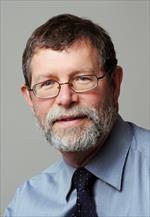Dr. John Balmes talks about dioxins at the GP Mill site.
Professor of Environmental Medicine at UCSFhttps://profiles.ucsf.edu/john.balmes#narrative

Dr. Balmes received his MD degree from Mount Sinai School of Medicine in 1976. After internal medicine training at Mount Sinai and pulmonary sub specialty, occupational medicine, and research training at Yale, he joined the faculty of USC in 1982. He joined the faculty at UCSF in 1986 and is currently Professor and Division Chief of Occupational and Environmental Medicine at San Francisco General Hospital (SFGH). His major academic activities include his research laboratory, several collaborative epidemiological research projects, various advisory and editorial committees, and direction of the clinical occupational/environmental medicine division at SFGH.
Dr. Balmes’ laboratory, the Human Exposure Laboratory (HEL), has been studying the respiratory health effects of various air pollutants for the past 27 years. Recently, the HEL has been focusing on the airway inflammatory effects of ozone, secondhand tobacco smoke, and wood smoke. The HEL was the first group to demonstrate a) histological evidence of ozone-induced airway injury and inflammation in human subjects, b) that asthmatic subjects have greater inflammatory responses to ozone than normal subjects, c) that ozone-induced inflammatory responses in normal subjects attenuate with short-term exposures on consecutive days in the lung, and d) that asthmatic subjects recruit macrophages to the airways with consecutive day exposures. The lab is currently studying the impact of a genetic polymorphism of the antioxidant enzyme, Glutathione-S-transferase M1, on the susceptibility of asthmatic subjects to ozone. We are also studying the relationship of acute airway inflammatory responses to acute cardiovascular responses after both ozone and secondhand tobacco smoke.
Dr. Balmes is also
collaborating on several epidemiological projects that are run out of
the UC Berkeley School of Public Health where he is a Professor of
Environmental Health Sciences. One such project is called the Children’s
Health and Air Pollution Study (CHAPS). The overall specific goal of
CHAPS is to assess the impact of air pollution on the health of children
living in the San Joaquin Valley, including adverse effects on immune
function that may increase the risk of asthma onset and exacerbation. A
second project involves study of the effects of biomass smoke exposure
on chronic respiratory health of children and adult women in rural
Guatemala. A third line of research involves the effects of arsenic in
drinking water on lung health in both Bangladesh and Chile. Yet another
project involves the effect of chronic exposure to hydrogen sulfide on
lung function in Rotorua, NZ.






